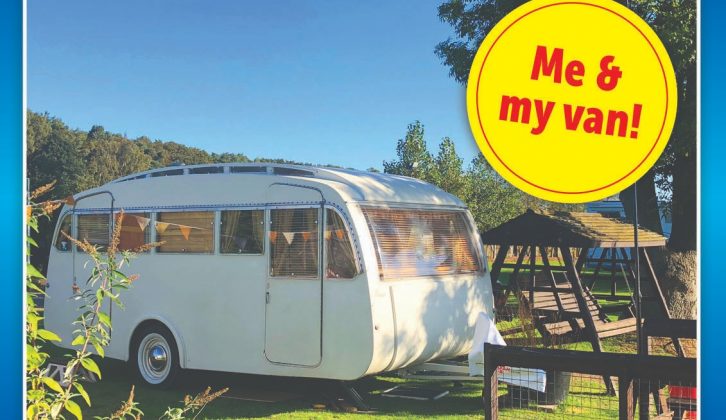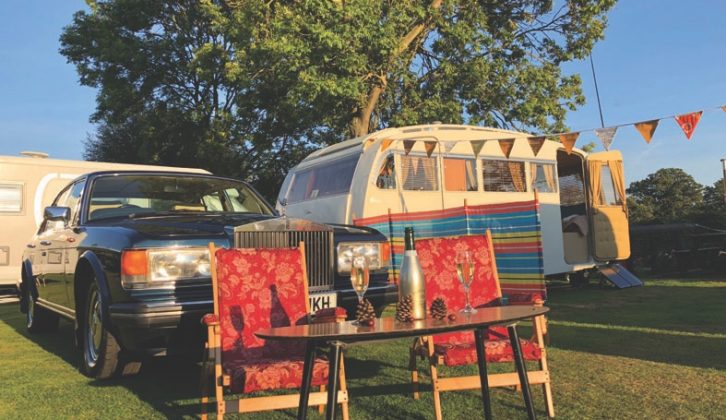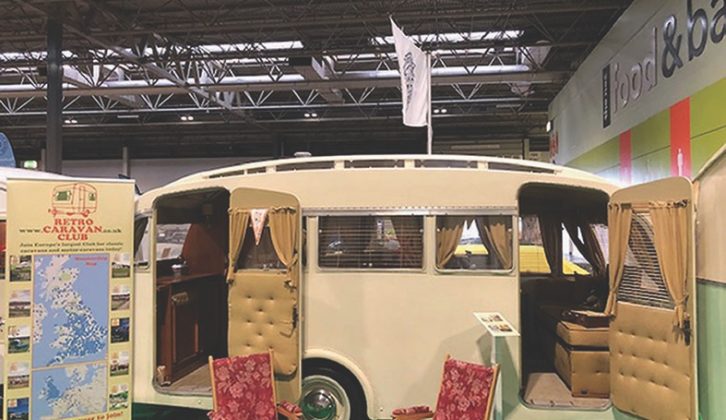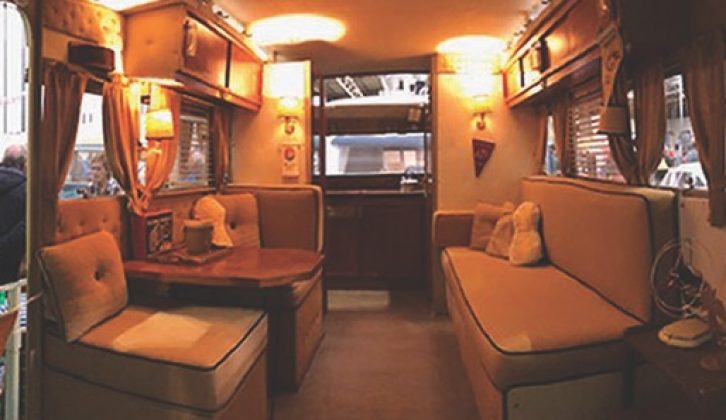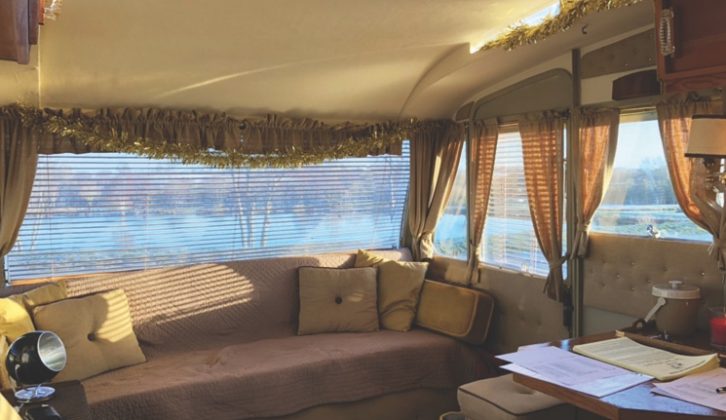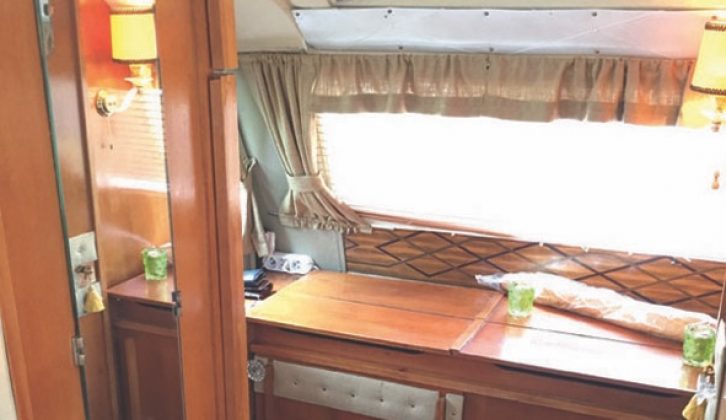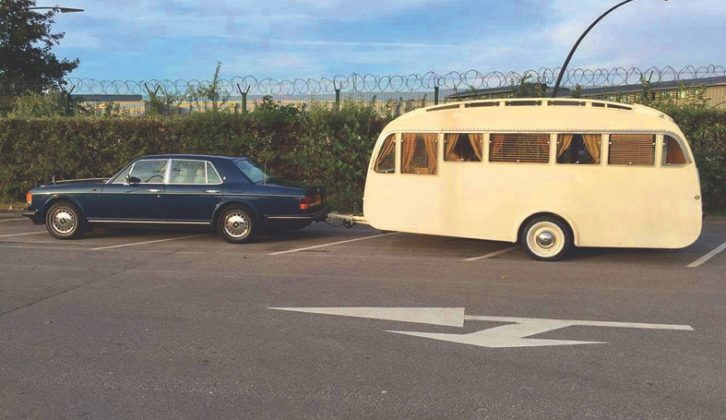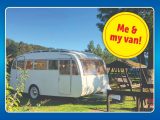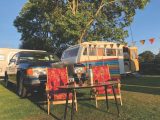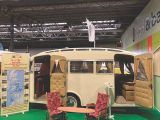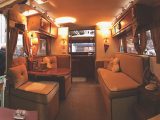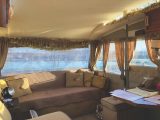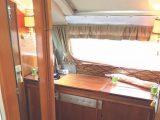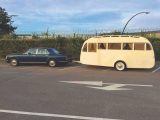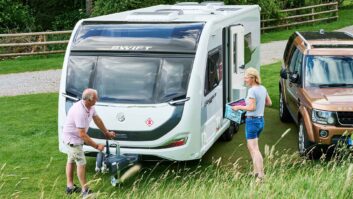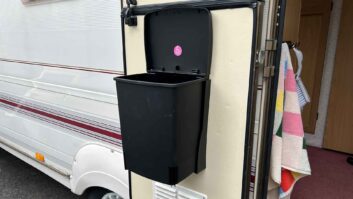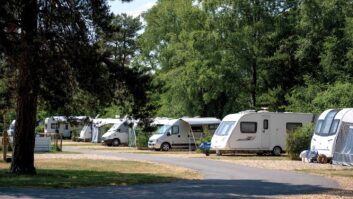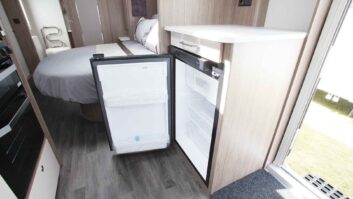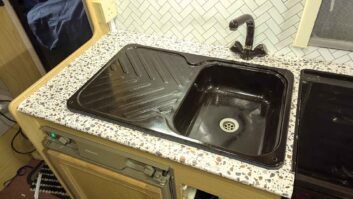As a classic car enthusiast, and having grown up enjoying motorhome holidays around Europe, I was always keen to find new ways to use my classic car more, while still touring.
In 2010, it dawned on me to buy a classic caravan to go behind my classic car. At the time I had a 1978 MGB GT and purchased a 1982 Safari 14/2. This was the start of my interest in classic caravans.
I first saw an Hénon caravan in 2012, in France, and I was quite amazed. The quality and striking design meant it really stood out from the crowd.
Fast forward to 2017 and, after looking for an Hénon for sale every month for five years, I at last managed to secure my purchase of the model I had seen in 2012.
It was rumoured to weigh almost 1600kg, so I arranged to have a towbar fitted to my 1988 Rolls Royce. I then set out on my 14-hour drive to Reims, in northern France.
Love at first sight
As the garage doors opened, I immediately fell in love with the van. I knew another chance like this wouldn’t come along any time soon and the deal was quickly done.
I drove back to England in a leisurely fashion, staying in the Hénon for a few days along the way. This enabled me to begin enjoying the experience after looking for the van for so long. It’s difficult finding a classic caravan for sale after falling in love with a certain shape, make or model! There are so many different types. You can’t just visit your local dealer and, like me, many enthusiasts wait years to find their dream caravan.
This particular model is a 1965 Hénon Harmonie, one of just three such models built in that year. However, this is believed to be the only one built at 2.2m wide, rather than the standard 2m model.
The body length is 4.6m, plus 1.2m for the towing hitch. I believe this is the only one in the UK and one of about 20 surviving, according to French classic caravan enthusiasts.
The Hénon’s design really is extraordinary – for example, its 29 windows give an impressive panoramic view from anywhere inside the caravan.
All Hénons come with two entrance doors on one side: one for entering the kitchen and the other for accessing the living area.
Luxury living
By night it can sleep five. The front sofa makes up into a large double, the side sofa converts into another double bed, and a small single can be made up from the dinette.
By day, there are two long sofas and a dinette in the living quarters. The smart kitchen towards the rear is fitted with a twin-burner hob and grill, a sink with running water and a fridge/freezer.
For storage purposes, there is a wardrobe, a run of upper cupboards and more space under the seating.
The washroom is fitted with a toilet and a shower.
My Hénon is not completely original – in fact, I learned that in 2009, it was being used as a chicken shed, after being abandoned on a farm in the south of France. Thankfully, it was eventually rescued, but it apparently proved much too difficult to restore all of the original features – parts are near impossible to source.
The shell and windows are original, but not the furniture, fixtures and fittings.
The furniture has been built from scratch and I have had the upholstery, curtains and blinds professionally made. I also had a new Perspex front window manufactured, by a company that specialises in recreating caravan windows.
Caravan history
The Hénon was no doubt the most extraordinarily unusual and eye-catching caravan ever to be made in France.
It was originally designed and built by Henri Hénon, who came from a family of cabinetmakers in the Somme region. He decided to build his first caravan for his wife, back in 1928.
As a scout, Henri enjoyed the outdoor life. However, his wife had other ideas and expected exceptional quality and comfort.
The first few models were built for his upper-class friends in the local area.
Having built a few caravans, Henri decided to introduce his creation to the masses, by exhibiting at the Paris Motor Show in 1934. A total of 44 caravans were sold between 1934 and 1939. But as the clouds gathered over Europe, Henri was forced to put all of his energy into the war effort.
In 1945, he slowly resumed caravan manufacturing. Then in 1954, in collaboration with a laboratory in Pas-de-Calais, Henri developed his first monohull caravan. This is what you see here, the ‘Verresine’, with panoramic windows and a 25mm polyester sandwich construction. By 1965, the firm was producing about 100 vans a year, but sadly, production ceased in 1970. The caravans were considered too expensive and sales dipped.
Retro style
I have been collecting classic cars and caravans for about 10 years. My oldest van dates from 1935, my oldest car from 1937. With my partner, Cameron, I founded the Retro Caravan Club in 2015.
We are now the largest caravan club in Europe for pre-1990 caravans and campers, having processed more than 1300 paid members!
This is an active organisation, holding more than 40 meetings every year and attending many prestigious events across the length and breadth of the UK. We also attend at least two events in Europe every year.
Membership is just £15 a year and your caravan must be pre-1990. Check us out at www.retrocaravanclub.co.uk or www.facebook.com/retrocaravanclub.
We offer free advice to those who are looking to buy or sell an older caravan or camper.
And if you are looking for advice about restoration, we can help with that, too.
I learned that, in 2009, my Hénon caravan was being used as a chicken shed after being abandoned on a farm in the south of France
